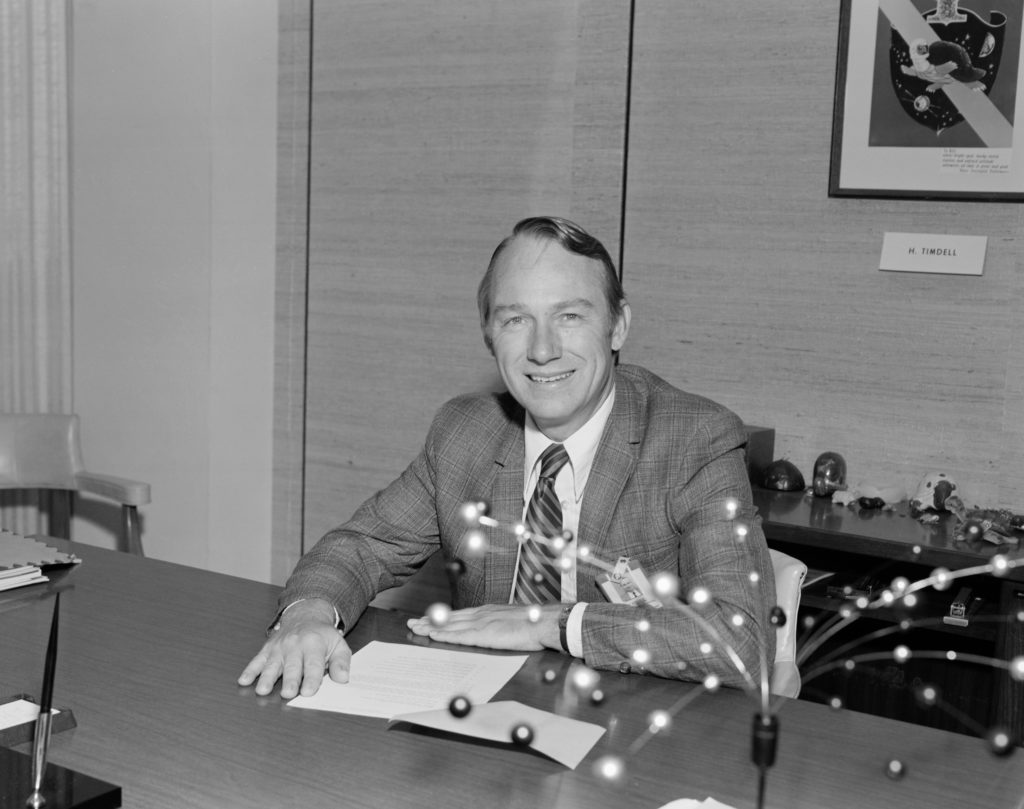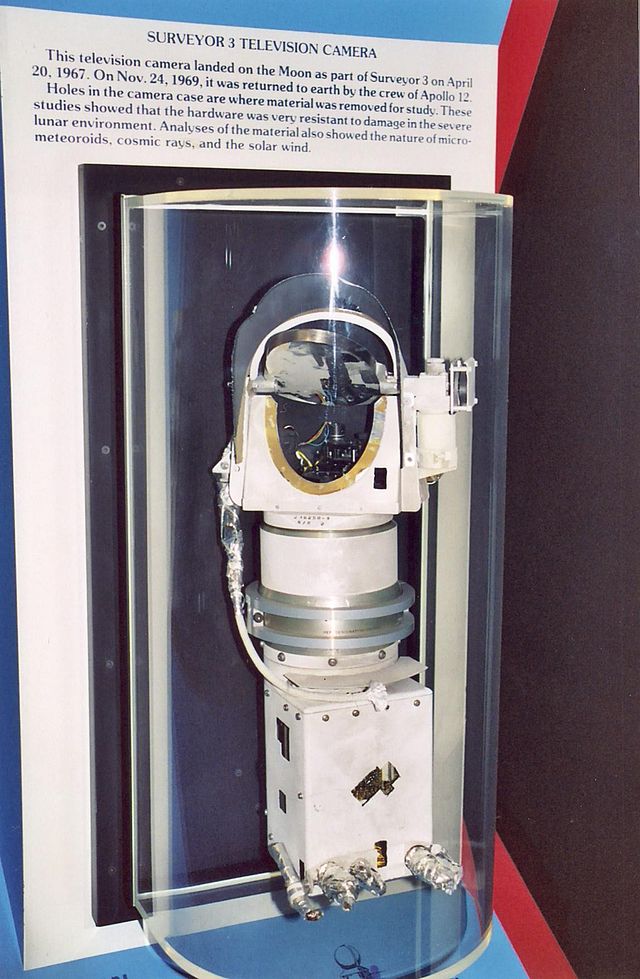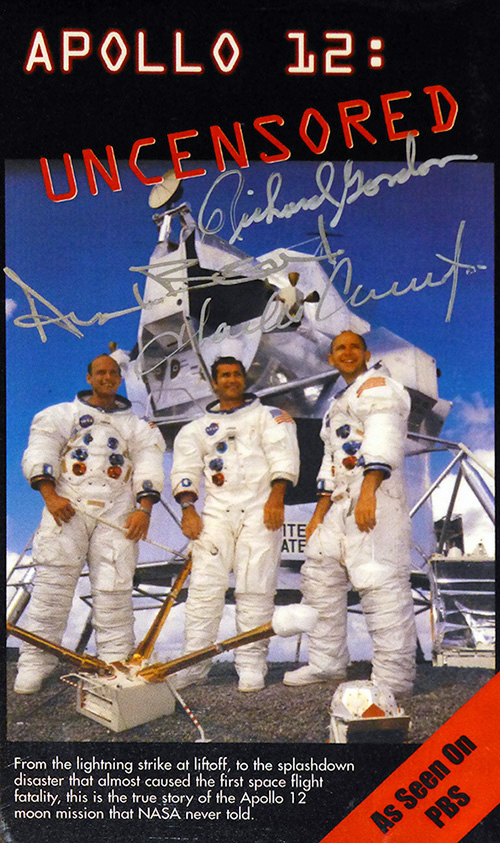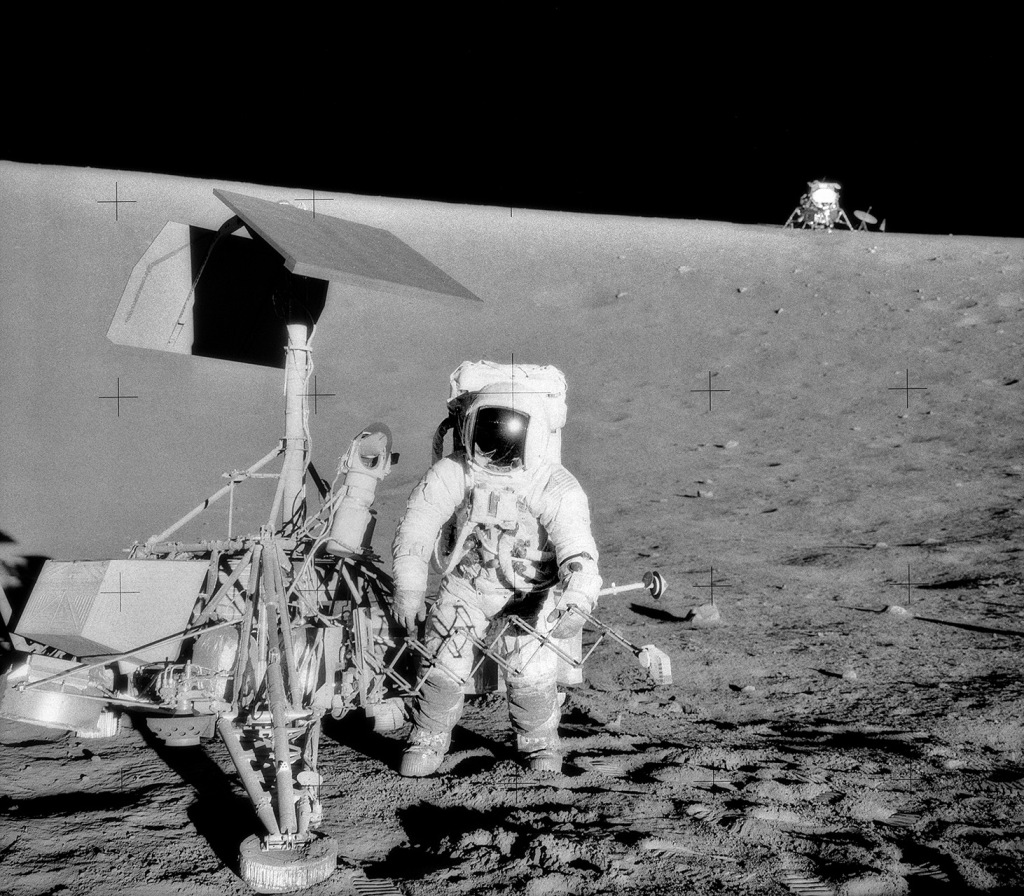In The thousand-ring circus article last month, I mentioned that it was difficult to find photos of NASA engineer Bill Tindall bigger than a postage stamp. Well, that long-time dearth of pictures ends today and here with ten large photos of him above and in the gallery at the end of this post, all thanks to the the friendly folks at the Johnson Space Center History Office. One of the photos I included in the first article, a screenshot from the “Navigation Computer” episode of the “Moon Machines” series, seemed like it might be an official photo, so I wrote to JSC historian Jennifer Ross-Nazzal with a link to the article and asked if that was indeed a NASA photo and if it might therefore exist in an online repository.
They couldn’t find it in any of their image repositories, and so went to the trouble of searching the JSC negative library. There they found several negatives, including the one I asked about (the uncropped original above), generously had all of them digitized, and sent them to me. My virtual hat is off to them for their help.
In the previous article, I theorized that the “H. Timdell” [sic] sign on the wall behind him was perhaps an egregious misspelling of his name from some conference he attended, but I think I was wrong. This uncropped original of that 1972 photo plus the next photo in the series (included in the gallery below) reveal that the tag is centered under a framed picture indicating his membership in the rather exclusive Interstellar Association of Turtles – Outer Shell Division – usually limited to astronauts. Details on the member challenge mentioned in the text at that link that could not be answered in polite company are on the back of that card (in the second image) and described in further detail here (it’s pretty tame).
The inscription at the lower right of the picture frame is a little out of focus, but I believe it reads as follows:
To Bill, 
whose bright-eyed, bushy-tailed,
fearless, and unafraid attitude
epitomizes all that is great and good.
Your Intrepid Followers
Now that might have been presented to him by lots of people – say, the entire astronaut corps – but that “Intrepid Followers” leads my mind immediately to the crew of Apollo 12, whose Lunar Module was called Intrepid. And Apollo 12 Commander Pete Conrad was an unrepentant wise-ass, so it would be very much like him to mangle the name on the package to firmly tweak Tindall’s penchant for accuracy. (Remember that Conrad is the guy who gave Jim Lovell the nickname “Shaky” – not the most respectful nickname for a test pilot – which I believe Lovell banned from being used in the script for “Apollo 13.”) I also just confirmed my recollection that Conrad once said of the night before they landed Intrepid on the Ocean of Storms, “You settle down for the night bright-eyed and bushy-tailed because you know, ‘Tomorrow, I’m going to land!'” Circumstantial? Sure, but that’s my new theory and I’m sticking to it. Unless corrected.

Conrad’s nickname? “Tweety”
In the third 1972 photo below, I’m pretty sure the even more out-of-focus sign above the bookshelf reads: “The more innocuous a design change appears, the further its influence will extend.” That’s one of the better of Murphy’s laws of general engineering.
So, here are the photos from NASA in chronological order, from his Gemini days in 1965 through 1979, the year he retired from NASA (the leading S number indicates the year). Click on any one to enter the gallery, and from the gallery any of the images can be saved by using the “View full size” link at the lower right, which you may have to scroll down a little to see.
Be aware that these are fairly large at about 3MB apiece – similar in size to modern digital camera images – so they make take a little while to show up in full size.

















